ADU Knowledge
August 22, 2025
What Should You Look for in an ADU Home Plan for Rural Washington Areas?


.png)
Schedule a free appointment with one of our ADU experts.
Get ADU QuoteOr call: (323) 591-3717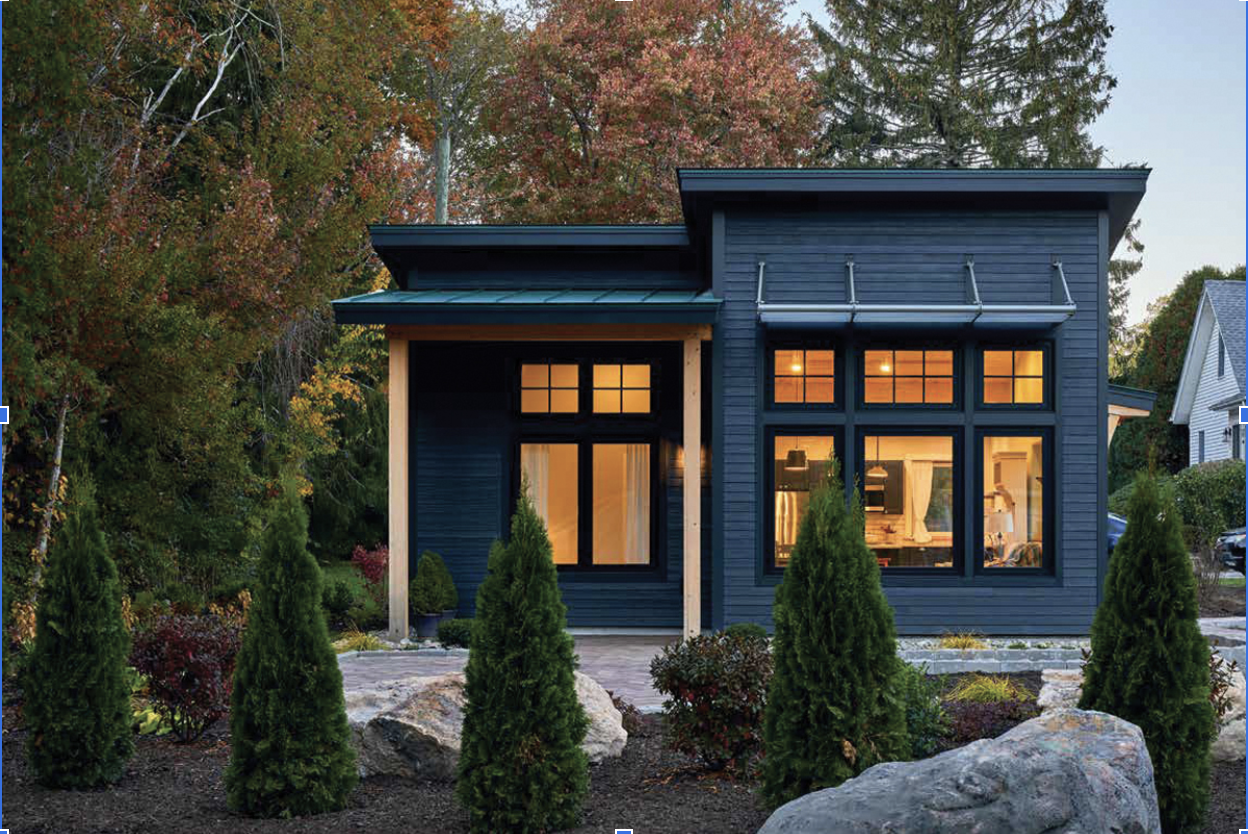
Accessory Dwelling Units (ADUs) have become a popular choice for Washington homeowners looking to add flexible living space, boost property value, or create rental income. While urban ADUs often make headlines, rural areas across Washington are embracing them too, thanks to more supportive state laws, larger lot sizes, and growing demand for multi-generational housing.
However, building an ADU in rural Washington differs from building one in a city. You’ll face unique considerations around zoning, utilities, site conditions, and design that can affect feasibility, cost, and approval timelines. Choosing the right ADU home plan from the start can save you time, money, and headaches; browse GatherADU’s permit-ready ADU floorplans to find designs suited for rural lots and request a free feasibility review to see what will work on your property.
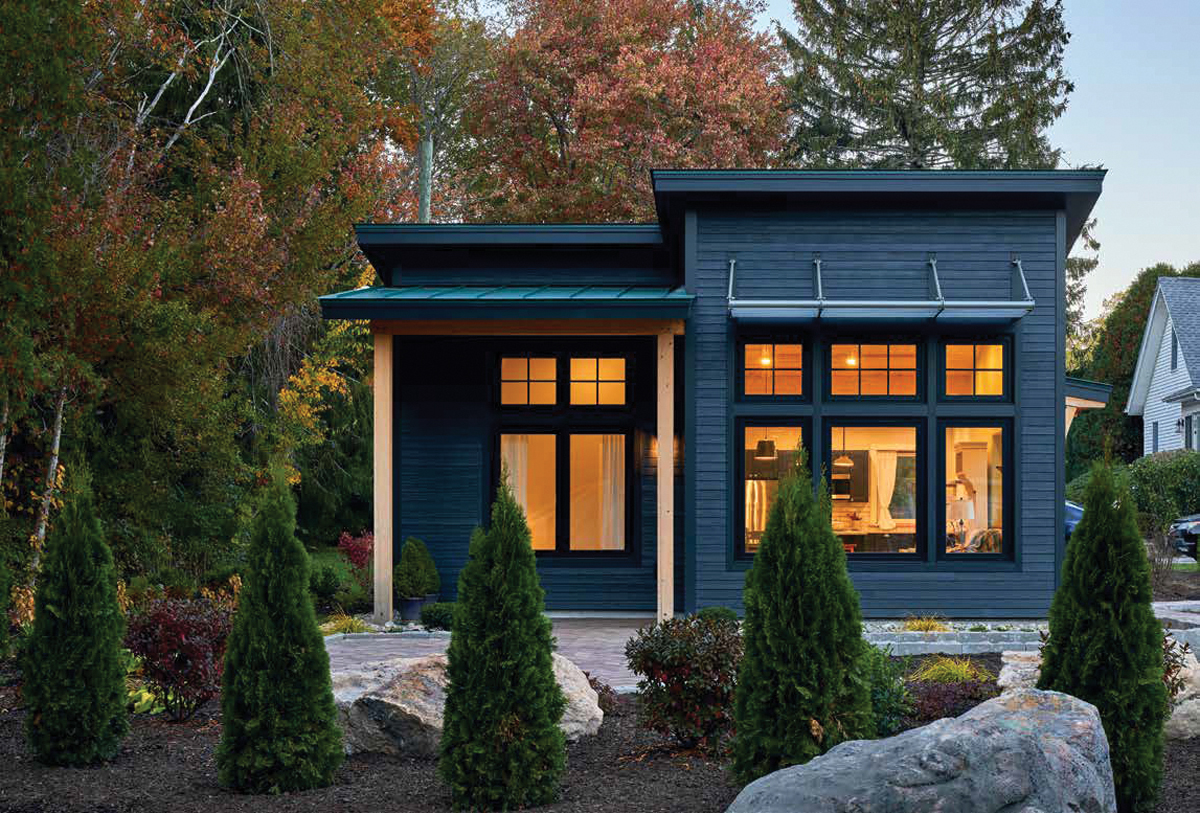
Across Washington, more rural property owners are discovering that ADUs aren’t just for city neighborhoods. With recent updates to state law, including HB 1337, the path to building a secondary dwelling has never been more accessible. These changes, paired with shifting community attitudes, are helping rural homeowners see ADUs as practical, value-boosting additions.
Tip: If you’re in a rural area, your larger lot can give you more freedom to choose a layout and placement that maximizes privacy and scenic views.

Navigating zoning and permits in rural Washington can be complex due to varied local rules based on land use types like resource, agricultural, or residential zones. Knowing these differences early is key to a smooth approval.
Before you commit, consult your county’s planning department and opt for plans with GatherADU that are pre-approved or tailored to local zoning to speed up your ADU build.

Rural lots often have uneven terrain and soil challenges that impact ADU design. Choosing a plan that fits your land helps avoid costly fixes and ensures durability. These natural features also affect how your ADU connects to utilities and sits within the landscape. Planning for these factors upfront leads to a smoother build and a more comfortable, long-lasting home.
Pro Tip: Pick ADU plans with adaptable foundations and flexible layouts tailored for your land’s shape.
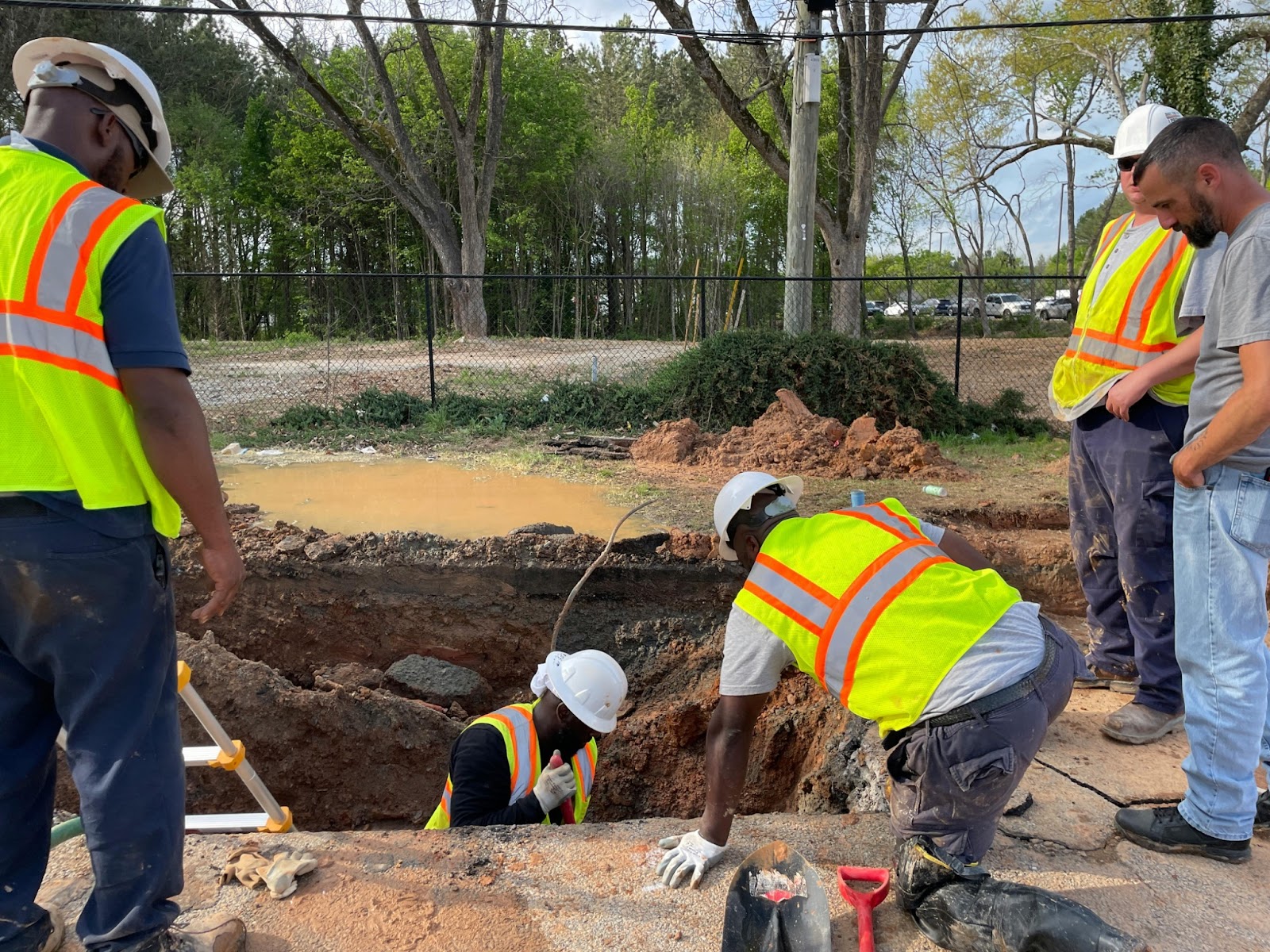
Utility access in rural locations can be more complex than in urban settings, so careful planning is essential. Your ADU plan should account for septic systems, well water, and alternative power sources to ensure smooth, cost-effective installation and long-term reliability.
Consult with local utility providers early and choose ADU plans that allow easy integration of off-grid and renewable energy systems.

Designing an ADU for rural Washington means balancing comfort, efficiency, and durability. Innovative layouts and thoughtful materials ensure your space feels roomy and stands up to local weather conditions.
Pro Tip: Prioritize flexible layouts and sturdy materials, like fiber cement siding and spray foam insulation, for durability and weather resistance.
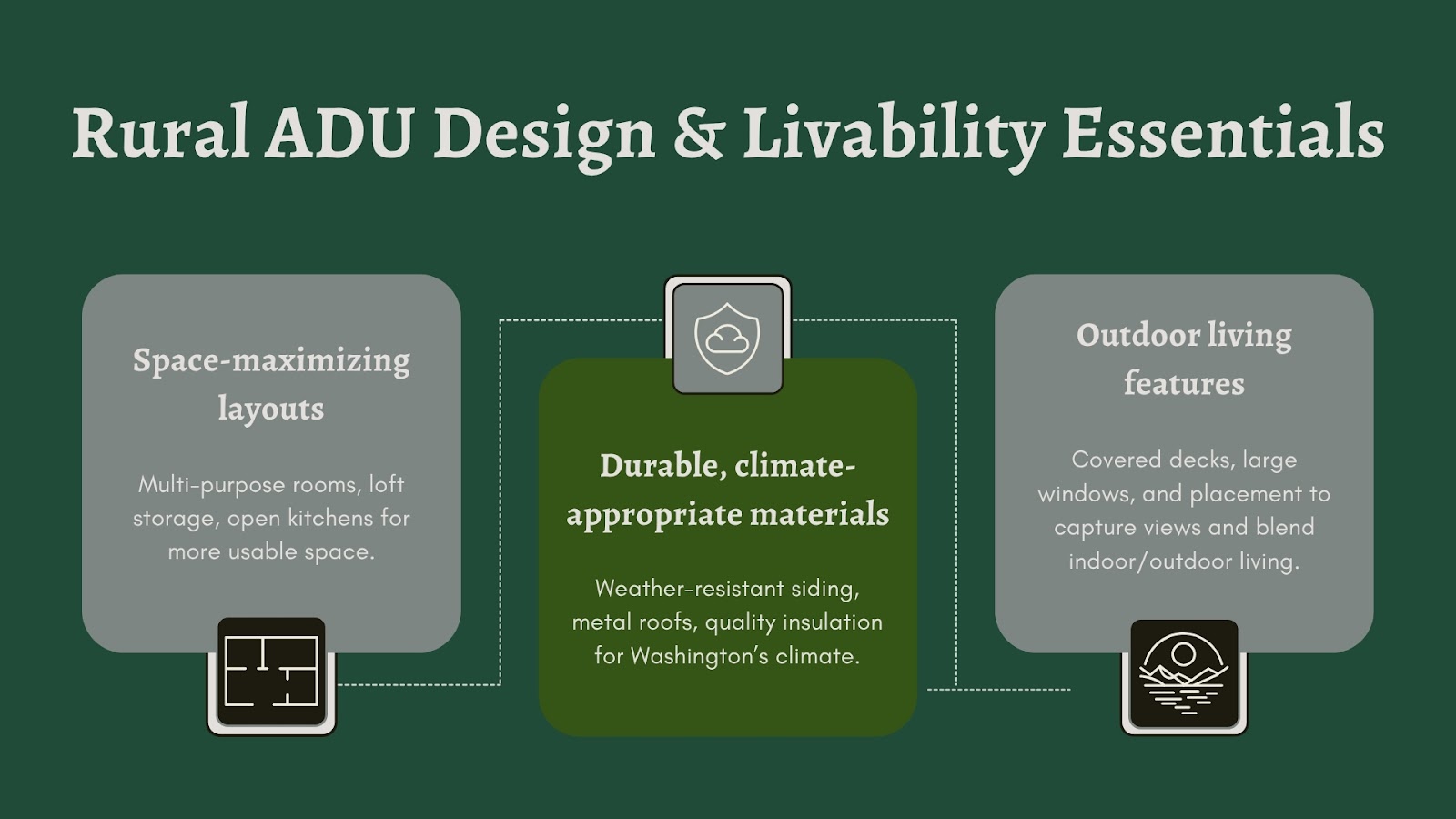
Sustainability is essential in rural areas where access to utilities can be limited. Incorporating renewable energy and innovative design can make your ADU more efficient and self-reliant.
Tip: Plan your ADU with solar readiness and passive features from the start to save on energy costs and reduce your environmental footprint.
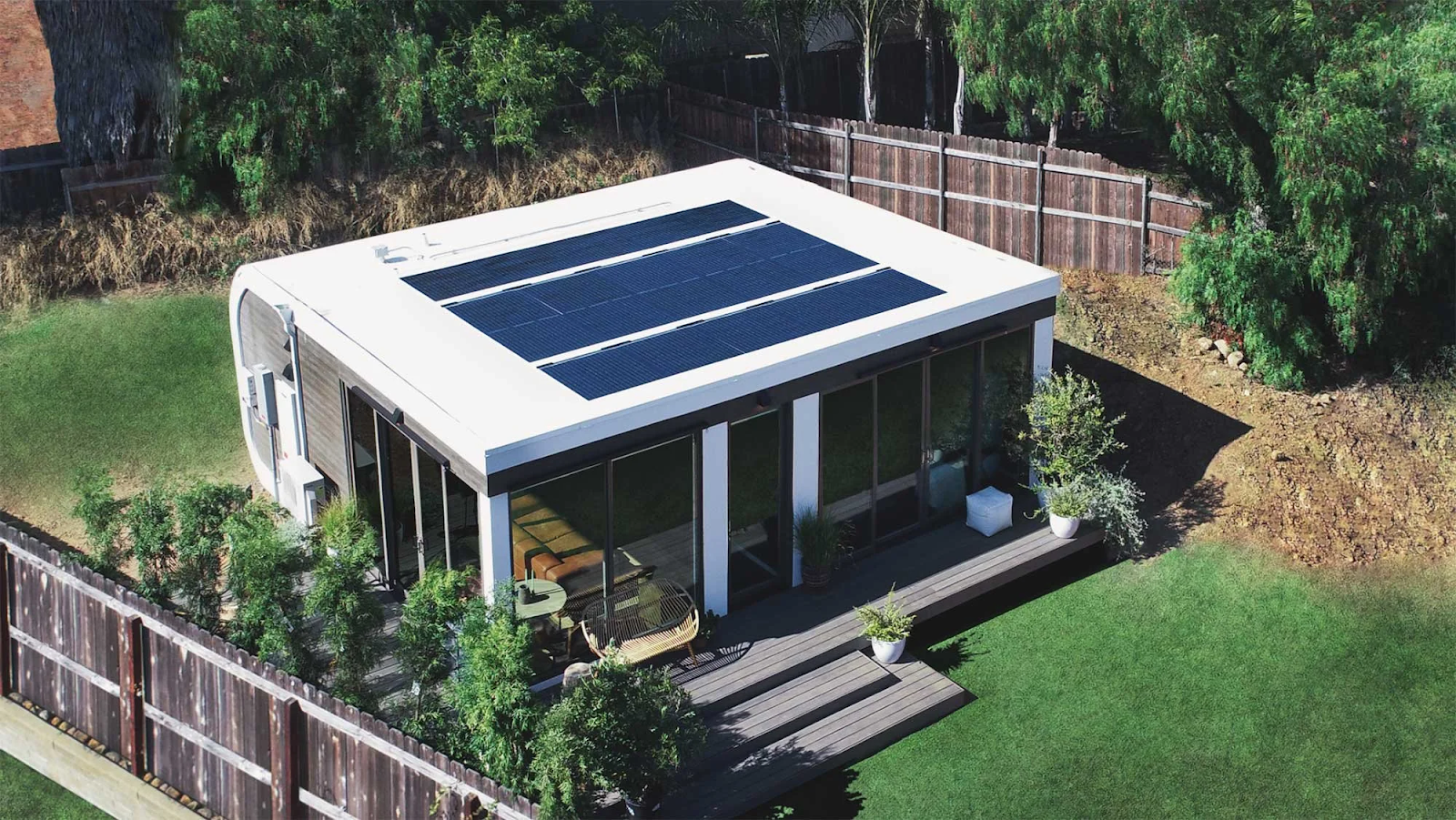
Building an ADU in a rural area comes with unique cost considerations. Understanding these upfront helps you plan your budget more accurately and explore available funding options. Rural sites often require extra work, such as utility extensions and site preparation, which can impact your overall expenses.
Tip: Research available financing and incentives early to maximize your budget and reduce out-of-pocket expenses.
Building a successful rural ADU starts with choosing a plan that fits your land, meets local regulations, and accommodates your utility needs. From adaptable designs for challenging terrain to energy-efficient and off-grid-ready features, the right plan makes all the difference in saving time and costs while creating a comfortable, functional space.
At GatherADU, we offer rural-friendly ADU floorplans pre-approved for Washington’s zoning and permitting. Whether for a guesthouse, rental, or retreat, our plans fit your property’s unique needs. Start now by requesting a free site evaluation or exploring our ADU plans for a smoother, more rewarding build.
It varies by county; rural areas usually require larger lots than urban ones. Always verify with your county’s zoning office to ensure compliance before planning.
Yes, both septic and well systems must be approved before permitting. This ensures your ADU has a safe water supply and proper waste management.
Not always; some sites need plan adjustments for terrain or utilities. Customization helps your ADU fit the land and meet local regulations.
Typically 3 to 6 months, but it can take longer with special approvals. Starting the process early and working with knowledgeable planners can speed things up.
Yes, some counties offer grants or incentives; check with your local planning office. These programs can help offset construction costs and encourage sustainable building.
.png)
Not sure where to start with your ADU project?